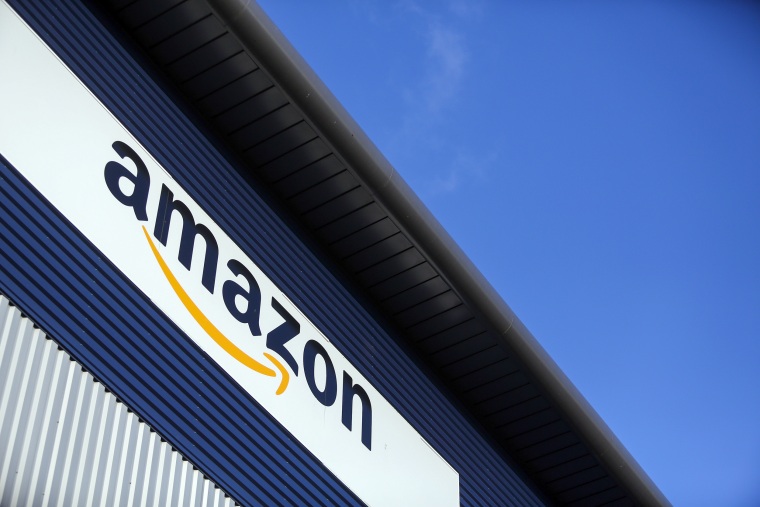You might not buy a refrigerator on Amazon now, but what if you could slam the doors and try the ice-maker in person?
Amazon, the 800-pound gorilla of the ecommerce world is encroaching on traditional retailers’ territory with brick-and-mortar bookstores and is reportedly laying plans to enter other categories, from food to furniture, using tactics honed by click-to-brick startups like eyewear purveyor Warby Parker and menswear brand Bonobos.
With five physical bookstores already open across the country and five more in the planning stages, the Seattle-based giant is embracing the idea that shoppers sometimes want to get out from in front of a screen and see, touch and try out goods in person, and it is eager to make inroads into the roughly 90 percent of shopping that still takes place offline, analysts say.
“It’s a huge trend, and to see Amazon actually embracing the physical store format, which they did everything to avoid for many years, is a clear indicator that there are aspects of a physical showroom that can enhance a brand,” said Matt Sargent, senior vice president of retail at Magid.
“People are really focused on the customer experience. Right now that’s the buzzword,” said eMarketer retail analyst Krista Garcia. “It’s just sort of that idea that you can’t really have a relationship with your customer online.”
As ecommerce grew, traditional retailers came to fear the concept of “showrooming” — a customer’s act of checking out an item at a mall or big-box store, then heading home to buy it online (often for less money) on Amazon. But it dawned on a few entrepreneurs that showrooming didn’t have to be a dirty word; in fact, it could be a way to bridge the gap between the selection and convenience online shopping delivered and the tactile experience of sitting on a couch, or trying on a sweater or pair of glasses.
According to the New York Times, citing anonymous sources within the company, Amazon is kicking the tires on the concept of brick-and-mortar showrooms for big-ticket items like furniture, appliances and electronics, in addition to its forays into book and grocery stores.
“There’s definitely consumer acceptance of the bookstore. It’s a good set-up,” said R.J. Hottovy, an equity analyst at Morningstar, noting that the storefronts give Amazon an opportunity to get its branded devices like the Echo speaker in front of shoppers, where they can try out and play with the devices. “It’ll be interesting to see how this all develops
Analysts say grocery might be Amazon’s toughest nut to crack. A traditionally low-margin business to begin with, it’s also the category in which shoppers are most resistant to change. While Amazon has had success selling dry goods with its Prime Pantry offerings, most people today still want to pick out their own produce and other fresh food, although that preference could shift as meal-kit delivery subscription services proliferate and become more widely utilized, Hottovy pointed out.
“It’s a massive opportunity, if you’re making a bet in the long term,” said Andrew Lipsman, vice president of marketing and insights at comScore, Inc. “These are behaviors that tend to change over time.”
In Seattle, Amazon is sticking a toe in the water with Amazon Go, an in-house convenience store for employees that serves as an incubator for new ideas around product selection and “frictionless” checkout, where an array of scanners and sensors know what a customer has bought without them having to approach a register.
These experiments are still in their infancy and many could have a long time before they come to fruition and change Americans’ grocery shopping habits, if they ever do. Although the New York Times reports that openings of two AmazonFresh outposts that will let customers pick up their orders in person are imminent, the page on Amazon’s site introducing Amazon Go still says the concept will open to the public in “early 2017.”
Timing also is an issue: If you need paprika, you probably don’t need it in two days — you need it now. Although Amazon’s Prime Now offering promises free two-hour delivery for more than 25,000 items, the service is still limited to a relative handful of cities.
Still, the cultivation of new retail concepts could help them in the future, analysts say.
“I think the important point is that Amazon has come to the realization that if they want to be a viable brand in grocery they need that physical footprint,” Sargent said.
Across the board, analysts say Amazon is likely to face the same growing pains as any new retailer, despite its digital dominance.
“Their expertise is in fulfillment, and physical retail is a different game,” Hottovy said. “If anybody can disrupt, it it’s probably going to be Amazon, but that’s one area they don’t have two decades of experience to lean on,” he said.
“Just because you’re a great online retailer doesn’t make you a great offline retailer,” said Brendan Witcher, principal analyst at Forrester Research. “These companies didn’t traditionally have to deal with labor, flow of traffic, products on shelves, security… that’s still going to be a learning curve.”
